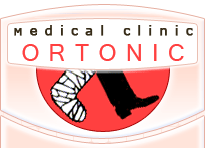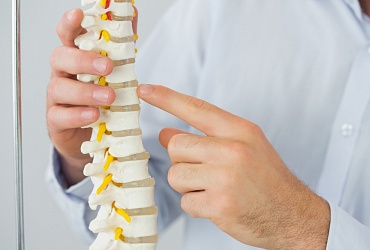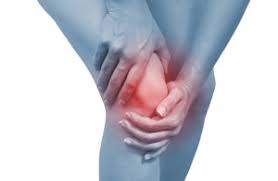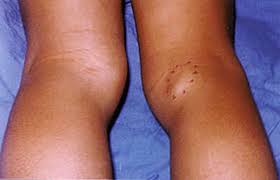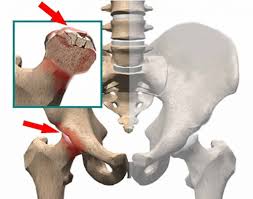Сoxarthrosis
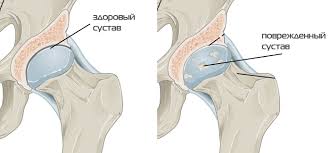
Coxarthrosis - deforming arthrosis of the hip joint.
Among degenerative-dystrophic diseases of the musculoskeletal system is one of the leading places.
Coxarthrosis is primary (coxarthrosis of unclear etiology) and secondary, arising on the background of dysplasia of the hip joint or congenital dislocation of the thigh, aseptic necrosis of the head of the femur, Perthes disease, suffered trauma (bruise, fracture, dislocation, microtrauma), inflammatory process (coxitis).
Possible damage to one or both hip joints. With primary coxarthrosis, other joints (often knees) and the spine are often simultaneously affected.
Symptoms of arthrosis of the hip (coxarthrosis)
Coxarthrosis usually develops after forty years equally often in men and women, but in women the disease is more severe.
The main symptoms of the disease include pain in the groin and thigh, limping, shortening of the sore leg and atrophy of the hip muscles. And in the initial stages of coxarthrosis pain in the joint is very weakly expressed. Therefore, the patient does not hurry to the doctor, hoping that the problem will somehow be solved by itself. As a result, time is lost, and the destruction of the joint goes on as usual. Gradually, there is a restriction of mobility of the patient's leg and painful sensations increase. The pain arises already at the first steps and subsides only when the person is at rest. The patient noticeably limps, when walking on a sore leg. The muscles of the thigh atrophy, that is, as if shrink and decrease in volume. Atrophy of the femoral muscles leads to the appearance of pain in the knee area, in the places of attachment of the tendons. The most interesting is that such pain sensations in the knee region can be expressed more strongly than inguinal and hip pain. As a result, patients are often diagnosed with an erroneous diagnosis - arthrosis of the knee joint - and are not doing the right treatment.
Diagnosis of coxarthrosis
Diagnosis is established using x-ray photographs of the hip joint. It is possible to detect congenital abnormalities of the development of the hip joint with the help of special measurements of the angles of the location of the femur and its neck. Establish the degree of coxarthrosis, the condition of the head of the femur and the expected possibilities of treatment.
There are three x-ray stages of coxarthrosis
· The joint slit of the hip joint is narrowed only in the upper-external areas, small bony growths around the articular surface of the acetabulum, a small compaction of the subchondral plate of the pelvic bones.
· Uneven narrowing of the joint space. Strengthening of marginal bony growths with the formation of "beaks", "canopies". Sometimes a subluxation of the head of the femur, a shortening of the neck of the femur, a violation of the symmetry of the location of the head of the femur in the articular cavity.
· The joint gap in the upper-external part is practically not determined. Bony growths are extensive, covering the entire hip joint. The head of the femur is deformed.

Treatment of arthrosis of the hip joint (coxarthrosis)
Non-operative treatment of arthrosis is possible only in not very neglected cases, with the I and II stages of the disease. In severe III stage, when the joint is destroyed almost completely, only surgical treatment is possible - replacement of the joint with its artificial analogue. Medicine in pills, candles, injections
1. Non-steroidal anti-inflammatory drugs. They are used during periods of "reactive" inflammation of the joint.
Due to the strong anti-inflammatory effect, these drugs are good at eliminating joint pain. Unfortunately, these drugs can not positively influence the entire course of the disease - they eliminate only such manifestations as inflammation, pain and swelling. In addition, it should be noted that with prolonged use of anti-inflammatory drugs can suppress the ability of articular cartilage to restore and often cause various side effects from the internal organs.
2. Vasodilators.
Very useful group of drugs. These remedies, when properly used (consult a doctor!) Have very few contraindications; they help the restoration of the joint by improving the joint blood flow and removing the spasm of small vessels. Thus, the delivery of the "building material" to the painful joint is facilitated, and night "vascular" pain is also eliminated.
Note. Using these drugs in tablets, take their first three days for one night only for one tablet, thus checking your individual tolerability, and only then go to a two-three-fold reception.
3. Muscle relaxants - drugs to relax the muscles.
These drugs are very helpful in relieving painful muscle spasms with coxarthrosis. In addition, they also improve to some extent the blood circulation in the joint. However, they must be used with caution, given their possible effect on the nervous system: they can cause dizziness, intoxication and some inhibition of consciousness.
4. Chondroprotective agents - preparations for the restoration of cartilage: glucosamine, chondroitin sulfate, rumalon, don, structum, arteparone.
The most useful group of drugs for coxarthrosis. These agents improve the restoration of cartilage, feeding it with complex components. Chondroprotective agents, unfortunately, quite slowly reduce the intensity of pain, but with regular use stop the development of the disease itself. You will not feel the effect of their application immediately, and at first it will be less pronounced than with the use of anti-inflammatory drugs, but in the long run chondroprotective agents are much more useful - they act both during admission and for a long time after, at the expense of restoring the very cartilage. In addition, they have almost no contraindications - exceptions are inflammatory diseases of the joints, individual intolerance and pregnancy.
5. Intra-articular injections of hormonal steroid preparations.
Note. It is not recommended to spend more than three to four hormonal injections in one joint, with the interval between injections should be at least two weeks. Local medicines - ointments, compresses, lotions
Many patients with arthrosis often rely on various advertised ointments, creams, lotions, balms almost as a single panacea. In such cases, I try to explain that the hip joint is located quite deep beneath the muscle layer; In addition, our skin has good protective "barrier" properties; so expect that some substance will penetrate through it in sufficient quantity, pass deeply through the thickness of muscles and reach the hip joint, unfortunately, it is not necessary. Perhaps the only effect of local remedies in the treatment of coxarthrosis is to improve blood circulation (especially with vigorous rubbing) - which in general is quite useful, and even with a significant effect on the muscles, sometimes in some cases, you can achieve the removal of a painful muscle spasm. For these purposes, any warming ointments or compresses are suitable, and there is no need to buy some "unique miracle ointments", etc.
Physiotherapeutic treatment. Various physiotherapeutic procedures for coxarthrosis, again due to the deep arrangement of the hip joint, are mainly used only to improve blood circulation and relieve painful muscle spasm.
Extension of the joint. It is carried out with the help of traction apparatus or by manual therapy. Practically this is the only procedure that allows to dissolve the articulating bones, increasing the distance between them and thus reducing the load on articular cartilages. However, the extension of the hip joint by means of the traction apparatus has the disadvantage that the traction is carried out only along the vertical axis, while the traction is also anatomically more advantageous even slightly laterally, to the outside. Extension with the help of manual therapy is much more physiological, allows you to better calculate the level of the load, taking into account the weight of the patient, his strength and the state of the ligamentous-muscular apparatus. The laboriousness of the method can be attributed to drawbacks - the procedure is difficult physically for both the doctor and the patient. In addition, the fashion for manual therapy spawned a huge detachment of healers - charlatans, who, with "treatment", press in, drive in, crush the joint - that is, they do exactly the opposite of what is necessary.
Diet. To date, numerous studies have not found any relation of nutrition with the development of arthrosis. For this reason, the scientific community can not yet imagine any specialized diet. Although there are periodic reports of developed miracle diets, with detailed verification they turn out to be profanity. Therefore, the only recommendation for nutrition is the use of any diet leading to a decrease in body weight - people with less weight are more likely to tolerate the disease, since the load on the joint when walking is much lower.
Gymnastics and aids. Selection of gymnastics with coxarthrosis requires certain knowledge: the movements should not be too energetic and intense, so as not to injure an already affected joint; in no case can not do exercises that cause severe pain! It is best to use static gymnastics, which do not load the joint itself, but strengthen the muscles.
In addition, with coxarthrosis is very useful as much as possible to engage in swimming; It is especially useful to swim in pools with salt water or in the sea. Moderate skiing or skating is allowed. From auxiliary means of patients with coxarthrosis should use a cane to unload the affected joint, and with advanced disease, arthrosis III stage, it is advisable to use crutches.
In conclusion, I want to say that the treatment of coxarthrosis by any one method is of little prospect. Only through a comprehensive impact on all links of the chain can we expect to achieve a certain success. In the late stages of arthrosis of the hip joint, the only way to recover is to replace the affected joint with an artificial joint - replacement arthroplasty.
